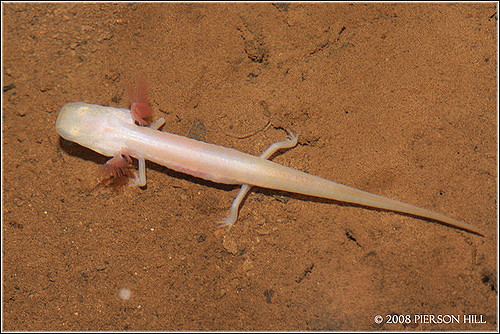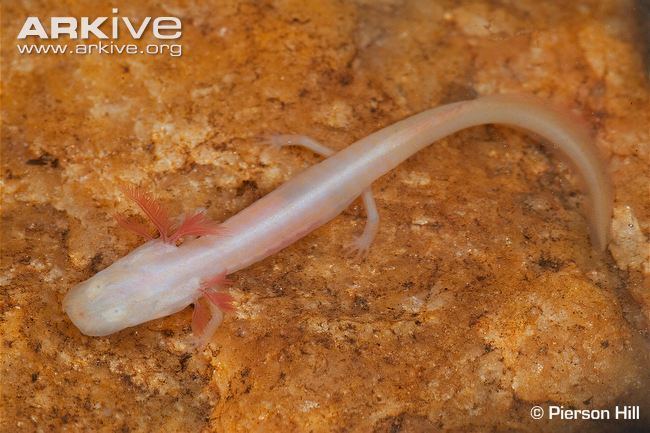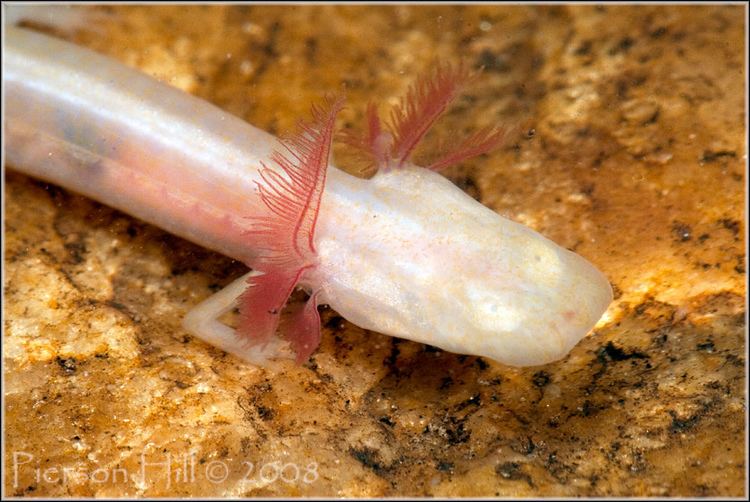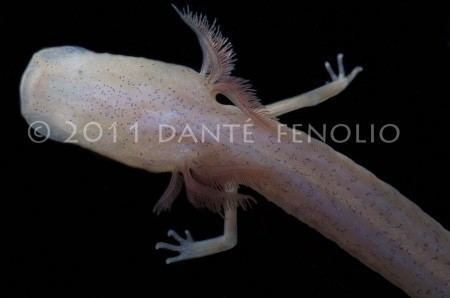Order Caudata Genus Haideotriton Rank Species | Phylum Chordata Family Plethodontidae | |
 | ||
Similar Salamander, Brook salamander, Amphibians, Lungless salamander, Many‑lined salamander | ||
Georgia blind salamander vortex spring august 13 2016
The Georgia blind salamander (Haideotriton wallacei) is a species of salamander in the family Plethodontidae (the "lungless salamanders"). It is endemic to the southeastern United States where its natural habitats are inland karsts, caves and subterranean habitats (other than caves). It is listed as "Vulnerable" by the IUCN and is threatened by habitat loss. (Haideotriton is considered synonymous with Eurycea by some experts.)
Contents
- Georgia blind salamander vortex spring august 13 2016
- Taxonomy
- Distribution
- Biology
- Habitat and conservation
- Motion
- References

Taxonomy

The Georgia blind salamander was previously considered a member of the genus Eurycea, but was later placed in the monotypic genus Haideotriton. An even more recent taxonomic revision moved it back, making Haideotriton a synonym of Eurycea [1].
Distribution

The Georgia blind salamander is found in underground habitats in the Southeastern United States. Its precise distribution is unknown, however the first specimen to be examined scientifically was discovered in 1939 in water pumped from a deep well in Albany, Georgia. The only other locality in Georgia from which it is known is the Climax Cave, near Climax, Georgia in Decatur County. The salamander is also known from at least eight locations near Marianna in Jackson County, Florida. All these locations are connected to the Floridan aquifer, a vast system of underground water-filled passageways in limestone which underlies much of the Southeastern United States.
Biology

Very little is known about the biology of this salamander. It feeds on ostracods, amphipods, isopods, copepods and other small aquatic prey. It frequents caverns where bats roost where bat droppings may fall into the water. Females with developing eggs have been found in May and November and it is thought that breeding may take place at any time of year. It appears to remain neotenic (breeding in its larval state) and no metamorphosised individuals have ever been found.The Dougherty Plain blind crayfish (Cambarus cryptodytes) is often found in the same habitat and may prey on the salamander, and fish such as the American eel (Anguilla rostrata), the brown bullhead (Ameiurus nebulosus) and the Redeye Chub (Notropis harperi) are also likely predators.
Habitat and conservation

The locations in which the Georgia blind salamander are found are connected by the Floridan aquifer and it is presumed that it is by this means that populations are linked. The water is usually clear, but may become cloudy after heavy rain, and remains at 18 to 21 °C (64 to 70 °F) throughout the year. Two of the caves in which this species was found at one time have since been destroyed. Other caves in the Florida Caverns State Park are protected and in these, populations of the salamander seem stable. The IUCN considers this species vulnerable. Threats include pollution from agricultural activities and changes in the water table due to the extraction of water from the aquifer. There is a possibility that populations may be impacted by over-removal for scientific purpose or by collectors.
Motion

It is blind, and uses its tail and ears to "see" where it is going.It moves weirdly, as expecting to be attacked at any time.
